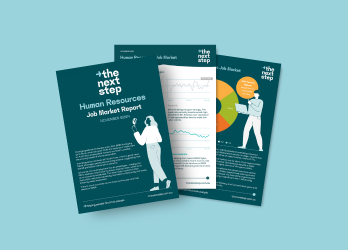Enhancing Psychosocial Safety in the Workplace: A Practical Guide for HR Professionals

Creating a well and psychologically safe workplace has become an imperative for employers and their Human Resources teams. Organisations now have a much stronger obligation to manage hazards and prevent harms associated with bullying, burnout, and a broad range of other risks.
As our understanding of psychosocial safety in the workplace evolves, HR teams, together with the WHS counterparts, are playing a pivotal role in fostering positive mental health and well-being at work. In this article, we capture key takeaways from a recent Next Step webinar and share practical steps for how you can enhance psychosocial wellbeing and safety in your workplace.
Educate yourself about psychosocial safety
Safe Work Australia’s Model Code of Practice: Managing psychosocial hazards at work is a useful resource for understanding workplace hazards and the impacts work can have on mental health.
At the time of publication, various regions are developing their own codes and regulations, with NSW, WA, QLD and TAS the first to finalise.
Comcare’s Work Demands series provides a suite of information for employers, managers and workers themselves to identify and manage the risks of work demands.
Create trusted channels of communication
Create channels for employees to report incidences, express their concerns, provide feedback, and share suggestions. Actively listen to their input and address their needs to foster a culture of trust and psychological safety.
In a recent webinar, Psychologist David Burroughs advised that employees must have access to trusted mechanisms that enable them to easily speak up. Information must not just be sought, but acted upon. He sees the training and education of front-line managers as a key aspect of a bottom-up approach. “Are we equipping our leaders with the capability to actually listen to and understand that information; and somewhere to report those psychosocial hazards or issues?” Burroughs asks.
Managers and supervisors must be trained on how to have supportive conversations about mental health and address concerns proactively. Supervisors also need support to understand new WHS laws and likely psychosocial hazards in the workplace.
More broadly speaking, you can enhance mental health literacy within the organisation by providing education on common mental health conditions, signs of distress, and available resources.
Conduct a comprehensive psychosocial risk assessment
Implement a thorough psychosocial risk assessment to identify potential stressors and hazards in the workplace. Consider factors such as workload, job demands, organisational culture, remote or dangerous work and interpersonal relationships. Use the findings to develop targeted strategies and interventions that address these risks and promote employee wellbeing.
Psychosocial risks vary greatly from one organisation to the next (and within different parts of each organisation. No one tool will hold all the answers, but experts recommend using evidence-based tools such as the Copenhagen Questionnaire, the Thrive at Work Framework and the People at Work Framework
WHS team-members will be essential in helping you to effectively understand, assess and mitigate potential hazards.
Implement effective controls
Focus on implementing controls that address the root causes of problems. Look at up-stream stressors and think about a multi-factorial approach.
Solutions that are too simplistic have been shown to be largely ineffective and, in some cases, have the potential to cause more harm than good. While it might not be easy, peel back the layers to look at underlying problems within the workplace, rather than band-aid solutions.
Recognise that different cohorts of employees may face unique challenges and risks.
Develop profiles or employee personas to better understand these diverse groups within your organisation. This approach allows you to tailor interventions and support systems to specific needs, ultimately creating a more inclusive and supportive workplace.
Track & measure efficacy
Implement a system to track and measure the control measures put in place. Regularly evaluate their impact on psychosocial health and employee wellbeing to understand efficacy.
Metrics such as absenteeism rates, turnover, employee satisfaction surveys, and incident reports form part of the picture, but should be considered lag indicators. As you evolve your approach, consider if you can identify and report on lead indicators and the efficacy of the work that you’re doing.
“Employee sentiment surveys might indicate that a hazard exists, but without detail around the duration, intensity and impact, they are insufficient to assess psychosocial risk.” explains David Burroughs.
This data-driven approach will enable you to refine and improve interventions over time, ensuring continuous progress.
Take an integrated & collaborative approach
Recognise that effectively managing psychosocial risk requires a collaborative approach across the whole of People and Culture (including recruitment, talent acquisition and management), as well as work health and safety, injury management and operations teams.
Establish a shared ownership model to ensure comprehensive governance and a holistic approach to addressing psychosocial risks.
Industry bodies and advocacy groups are another point of call. The Corporate Mental Health Alliance, for example, is a business-led, expert-guided member organisation dedicated to providing mentally healthy workplaces for all people.
Design jobs effectively with psychosocial safety in mind
Effective job design plays a crucial role in managing and improving psychosocial safety in the workplace. By carefully structuring and organising job tasks, responsibilities, and roles, employers can reduce stress levels, enhance employee engagement and help to prevent harm before it occurs.
A well-designed job considers factors such as workload, autonomy, skill variety, and opportunities for growth and development. It ensures that employees have a sense of control over their work, experience a reasonable balance between challenges and skills, and feel valued for their contributions. The SMART work design model is an evidence-based framework that can be used when designing meaningful and motivating work.
Effective job design not only minimises the risk of psychological harm but also creates opportunities for employees to thrive and flourish in their roles.
Making a difference is within your grasp
As a HR professional, you have the power to create positive change and foster a mentally healthy workplace. By fostering open communication, conducting comprehensive risk assessments, enhancing leadership capabilities, promoting work-life balance, and providing training and education, you can improve psychosocial safety for the long-term.
Remember, addressing psychosocial risks is a complex journey, and continuous improvement is key. The best way to make a difference is to make a start.
Resources
Identification & assessment:
Recent research:
Job design:



